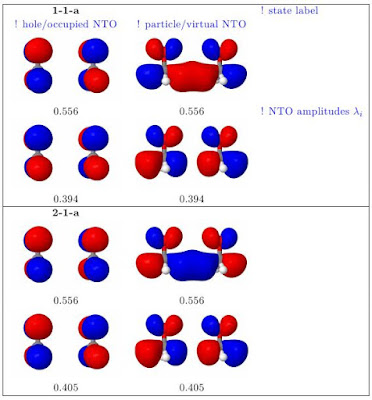The theoretical density, orbital relaxation and exciton analyis suite, conveniently abbreviated TheoDORE, goes into version 1.2. There is support for a number of different quantum chemical programs: Q-Chem, Columbus, Molcas, Turbomole, Orca, Gaussian, and various types of GAMESS. Aside from the charge transfer number analysis, the electron-hole correlation plots, and the natural transition orbitals, TheoDORE also lets you perform various kinds of population analysis. You can also process density matrices to get unpaired electrons, bond orders, and attachment/detachment densities. You can even get an approximate exciton size (even though the real thing is only available in Q-Chem). And everything is embedded in an ever improving user interface. So, check it out :)
There is also a new tutorial that should allow you to get started quickly and plot such nice things as these natural transition orbitals:
The US Invaded Venezuela and Captured Nicolás Maduro. ChatGPT Disagrees
-
Some AI chatbots have a surprisingly good handle on breaking news. Others
decidedly don't.
2 hours ago

No comments:
Post a Comment